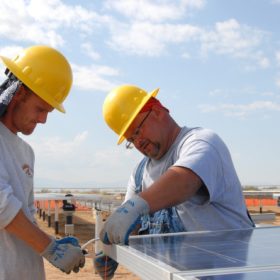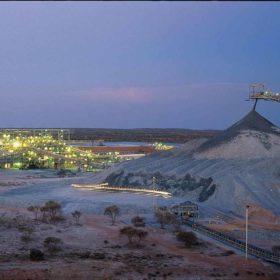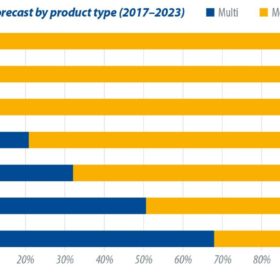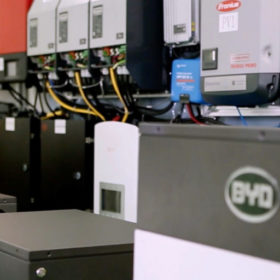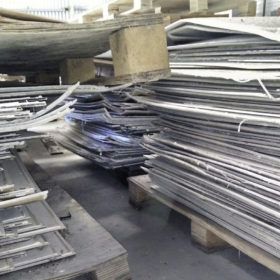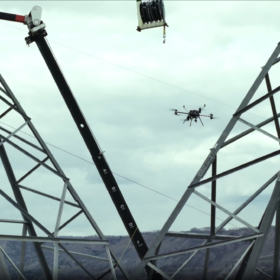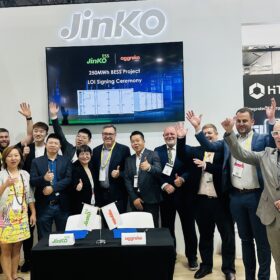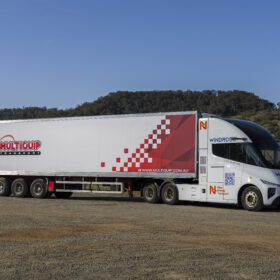A clean energy world would support millions of new jobs
A study from Finland’s Lappeenranta University of Technology has predicted solar and other renewables can provide a global energy jobs revolution – just as four European operations revealed recent struggles.
Concern about climate escalates in Australia’s hottest year on record
As the country grapples with devastating bushfires, the number of Australians concerned about climate change has climbed. Almost four-fifths of those surveyed last week said they were concerned about climate change, an increase of five percent from July, according to think-tank The Australia Insitute. The polling comes hot on the heels of the Bureau of Meteorology’s 2019 Annual Climate Statement, showing there is every reason for concern and confirming 2019 was both the warmest and driest year on record for Australia.
REC Group launches triple 25-year warranty, doubles coverage on TwinPeak and N-Peak solar modules
Norwegian solar panel manufacturer REC Group has upped the ante with new warranty deals and reduced the annual power degradation of its products. In addition to a brand new, triple 25-year warranty exclusively offered by certified REC Solar Professional installers, it has extended coverage form 10 to 20 years for its TwinPeak and N-Peak products.
Researchers stress the necessity of stable supply of green-tech minerals and metals
The global transition to a low-carbon energy future hinges upon the sustainable supply of green-tech minerals and metals, says researchers. Australia’s reserves and export capabilities in nickel, cobalt, lithium and other rare earths mean our next mining boom could be of global existential importance.
100% renewables means 95% less water consumption for conventional power generation
According to a new study by Finland’s LUT University, solar PV consumes between 2% and 15% of the water that coal and nuclear power plants use to produce just 1 MWh of output; for wind, this percentage ranges from 0.1% to 14%. Under the researchers’ best policy scenario, water consumption could be reduced by 75.1% by 2030, compared to 2015 levels.
Investors learn about Tasmania’s green hydrogen potential
Tasmania has approached international investors to present its unique potential for the production of hydrogen from renewable sources as it seeks to emerge at the forefront of the nation’s green hydrogen push.
Module prices continue to slide
After China’s National Day holiday, demand started picking up at a slow pace, but the anticipated installation rush did not occur as expected, due to land and financing issues, as well as the return of winter. These factors will also delay the timing of more than 6 GW of capacity to the first half of next year. PV InfoLink has thus downwardly revised its estimates for installed capacity in the fourth quarter to 11.3 GW in China and 30 GW globally, bringing this year’s global demand forecast to below 120 GW.
BYD to introduce next-generation Battery-Box in 2020
The Chinese manufacturer has also announced plans for a tenfold production capacity increase, as it wants to cater to all project sizes with two versions of its high-voltage storage system.
Assessing metal leaching from PV modules dumped in landfill
An Indian research team has analyzed around 300 scientific studies about PV panel waste containing carcinogenic metals. The researchers said solar module recycling is not economically profitable and policy support is necessary to avoid panels being dumped in landfill.
Star Wars’ Death Star with PV modules could surpass global energy needs by 10 times
EOn has calculated the number of PV modules that could theoretically be installed on the Imperial space station from the popular film series. It concluded that even a small version of the station would be able to provide enough solar power to supply 2.5 billion households on Earth.
